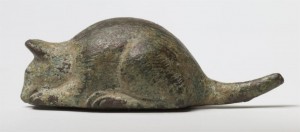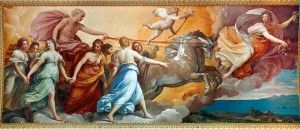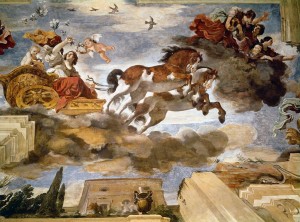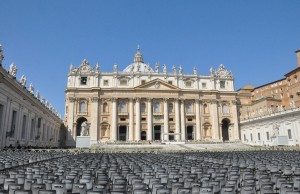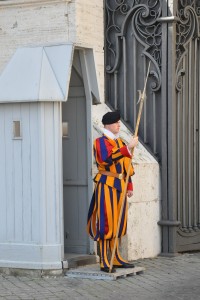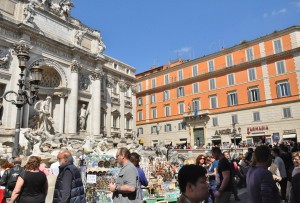The Scottish poet Robert Burns (1759-96) was commiserating with a tiny rodent whose world has been discombobulated by human activity in his poem To A Mouse, On Turning Her Up In Her Nest With The Plough (1785) and left posterity with this wonderful verse that has since become cliché.
But, Mousie, thou art no thy lane,
In proving foresight may be vain;
The best-laid schemes o’ mice an’ men
Gang aft agley,
An’ lea’e us nought but grief an’ pain,
For promis’d joy!
We felt as that Mousie must have, as we bobbed in the surges and cataracts of three million pre-Pascal tourists and the normal currents of Roman life. We had practiced foresight, thought we would be there and gone before the tsunami of summer visitors. We had studied guidebooks and charted the reefs and rocks that might bar our way. We had found that “wee bit housie” where we would nest and anticipated how to weather such storms as we might encounter.
So much for planning. So much for all those guidebooks and websites.
Consider the day we arrived: April 1. Yes, that would be April Fool’s Day.
I yearned to see the ceiling painting for which the Casino dell’Aurora is named and known. There are two Casinos, in fact, and two ceilings of the goddess of the dawn, one by Guido Reni (1613-14) and one by Guercino (1621). This is important so pay attention.
Page 256 of the Eyewitness Guide says the Casino dell’Aurora with the ceiling fresco by Guido Reni can be viewed on the first day of the month (except January) from 9 to 12 and 3 to 5. (This information is unchanged from editions more than a decade old.) The address given for the Casino is via Lombardia, 46. That’s up on the Pincian Hill, on the edge of the Villa Borghese.
Travel fatigue be damned, said I. We dropped our things at the apartment in Trastevere and took a taxi to via Lombardia (not cheap). There we rapped on a forbiddingly shabby but sturdy green door only to be told by a wizened Roman nonna that we could not see the Guercino, that we wanted to see the Guido Reni, to go to the Quirinal Palace (all this information translated by the helpful doorman working at the posh hotel across the street). This was the Villa Ludovisi, the location of the Guercino. No, we could not come in. Yes, we would have to get special permission to enter. We must go to the Villa Pallavicini; the Guido Reni is there.
Okay. Whatever.
We consulted the map and headed downhill. En route from via Lombardia to the Quirinale, we paused at Borromini’s San Carlo alle Quattro Fontane. And having worshiped that space, we of course had to stop at Bernini’s San Andrea al Quirinale further down the street. In retrospect, we were wasting precious minutes.
We finally arrived at the Quirinal palace and inquired of the uniformed and beribboned guard—a long, lanky fellow sparkling with boyish charm—about seeing the fresco. By this time it was pushing 5:00. He assured us we could visit on Sunday morning between 8:30 and noon. Sunday? Really? I wasn’t so sure.
I did some more research. The website and Eyewitness Guide agreed: visitors were allowed in only “the first of every month except January.”
The address of the Casino dell’Aurora with the Guido Reni ceiling is, moreover, the Villa Pallavicini Rospigliosi at XXIV Maggio, 43. We arrived in good time on Sunday morning. You guessed it. The Casino dell’Aurora is open only the first day of the month (except January) from 9 to 12 and 3 to 5. We failed to see the Casino in 2001 and again in 2014.
That’s zero for two.
This trip I hoped to get my Dear One up the Cupola of St. Peter’s; it’s an amazing view. I also found bus tours of the Vatican Gardens; that would be fun and we’d get a view of the Basilica more like the one Michelangelo intended. We’d explored the church before, gazed at Michelangelo’s Pièta and circled Bernini’s Baldacchino; we’d visited the Vatican museum and seen the Capella Sistina. Nope, climbing the Cupola was our goal, that and a ride through those legendary gardens. The Monday we chose for that excursion brought sunshine, intense blue skies, and uncomfortable warmth.
As we stepped from the portico into the piazza we saw… people. So many people. And so many barriers.
I don’t know who is in charge of crowd control in Vatican City but they got their degree summa cum laude from the Fascist School of Administration. Entry into the Piazza San Pietro could be gained only through two narrow gateways at the edge of Piazza Pio XII. Entry to the church must start at the south colonnade where one passes through search and x-ray security. We made it through security; we opted out of the 90-minute wait for the elevators to the Cupola; we tried to get a look at the Bernini equestrian sculptures of Charlemagne and Constantine, and the Bernini-designed Scala Regia. Charlemagne at the north end of the narthex some thirty or forty feet away was barricaded behind administrative desks and a half-closed door; Constantine and the Scalia Regia were hidden on the other side of the line for the Cupola and similarly inaccessible.
Enough, we said. St. Peter’s will always be there.
We dropped our postcards in the Vatican mailbox on the way out. Exit is through the north portico only. (Do you know that a stamp for a postcard with a US address now costs 2€? That’s $2.75; no more postcards for anyone with an email address…) At Piazza Pio XII, a lovely girl in the ticket office said there was no tour. I clarified: no tour today? This week? No, no more tours at all. Apparently it’s a security issue; visitors gawping from seats in a minibus pose an insurmountable threat to the well-being of the Pope. I went back checked that website that offered the garden tours; at some point after March 31 the information had changed. Now, they explain, the tours are canceled for security reasons. Indefinitely.
Another zero for two; or is the count zero for four?
Remember the mantra from Alcoholics Anonymous? “God, grant me the serenity to accept the things I cannot change, the courage to change the things I can, and wisdom to know the difference.” That’s good advice.
Finally there was the Museum of Pasta. My Dear One had seen it, he said, at the base of the Quirinale near the Trevi Fountain. We made a point of looking for it and we just couldn’t find it. Finally we resorted to the computer. My Dear One found a site for the Museo Nationale delle Paste Alimentari. I clicked on the English language icon. The museum has been relocated to via Flaminia, 141. Where is that? Well somewhere slightly north and west of the Villa Borghese. No problem. We’ll just include it on some other excursion before we leave the Eternal City.
Oops! That’s not gonna happen, either. Apparently the Pasta Museum is closed: Important News: The Museum is temporary closed for restoration. Date and place of reopening will be communicated.
Zero for five.
Will there be another chance to do all these things? I hope so.

